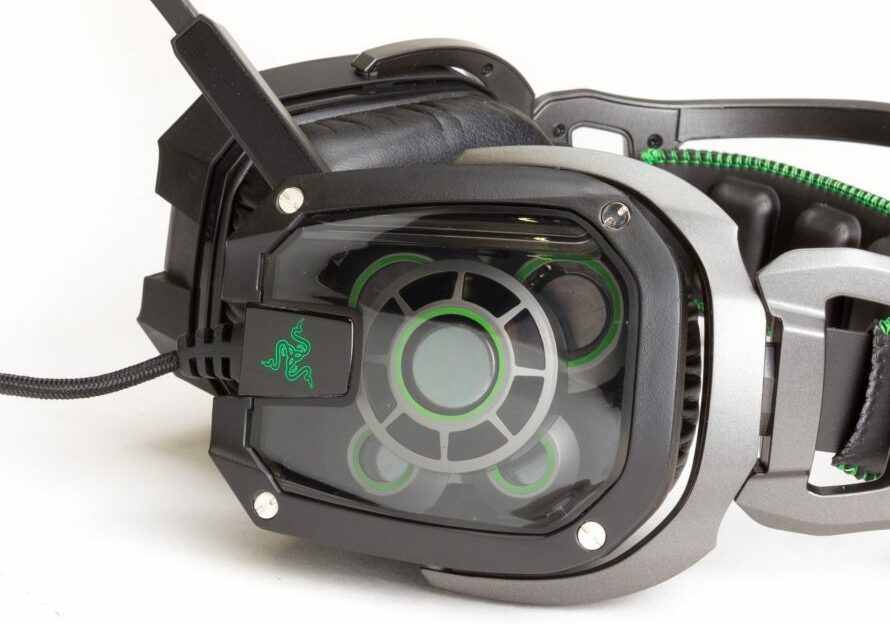
Do you think you play better while wearing gaming headsets? Many people, ourselves included, enjoy the immersion and focus that headphones grant. Even better than regular headsets are surround sound headsets. They can totally change your audio and gameplay experience.
Perhaps you have done some research and are looking to invest in a surround sound setup, or maybe you’re not sure if your current pair already has surround sound. Worry not; we have all the answers for you!
Do All Gaming Headsets Have Surround Sound?
No, most gaming headsets use two drivers, AKA speakers, one per ear. Some gaming headsets utilize complex and often proprietary software to create ”virtual surround sound”, tricking your brain into hearing sounds in different directions. There are true 5.1 and 7.1 surround sound headsets on the market, but most agree that the virtual surround sounds in headsets is just as good and it is much more affordable.
How Do I Know If My Headset Has Surround Sound?
The most sure-fire way to know for sure if you’re current headset has surround sound is to check the manufacturer’s specifications. These can be found online and sometimes in your product’s box.
Beyond that, there are a few other tests you can do. Jump into a surround sound-supported game and test your headset by listening to in-game sounds at various locations and angles. If the audio sounds different as you move and rotate, then there is most likely some type of virtual surround sound software at work.
Otherwise, if you’re feeling adventurous and enjoy tinkering, you can attempt to take apart your headphones to physically confirm how many drivers are present.
*NOTE: You may risk permanent damage to your headphones and/or personal injury. Tinker at your own risk.
Often times this may be as easy as removing a plastic cover, though take care not to break any clips on the plastic so that the headset will go back together correctly.
- YOU MAY ALSO LIKE: How Often Should You Replace Your Gaming Headset?
Traditional Speaker vs. Headset Surround Sound
Traditional surround sound takes advantage of multiple speakers placed across the room from each other to send audio to the listener’s ears at different angles. This is a simple yet effective solution to simulate real-life sound.
However, there are cases when headsets may be preferred over traditional speakers. Headsets are great at isolating the listener and keeping ambient noise out. When trying to replicate true surround sound, headsets have a unique challenge to overcome, space.
Where traditional surround sound systems have an entire room to fit speakers, headsets must squeeze multiple speakers right next to the user’s ears. This mechanical complexity is the main reason why true surround sound headsets are more expensive than their virtual counterparts.
The reduced space also makes it harder to create a clear distinction between different drivers and sound sources. That is why most people agree that if someone wants a surround sound headset, virtual surround sound works just as well as heavy and expensive true surround sound.
- READ ALSO: Best White Gaming Headsets
5.1 vs. 7.1 Surround Sound
True surround sound comes in two main configurations, 5.1 and 7.1 systems. The distinction between the two is really quite simple. 5.1 systems have five speakers and one subwoofer, while 7.1 systems have seven speakers and one subwoofer. Thus the names 5.1 and 7.1 (5 speakers + 1 subwoofer and 7 speakers + 1 subwoofer)

5.1 systems have a front left, front right, back left, lack right, and center speaker layout. While 7.1 systems have the same but with the addition of left and right speakers. The additional speakers allow for a smoother and more precise surround sound experience.
Not all games and media are designed for surround sound, though, especially 7.1 surround sound. Before you decide to purchase a new headset with surround sound, make sure to check that your favorite games support 5.1 or 7.1 surround sound.
- RELATED ARTICLE: Best Gaming Headsets with Good Bass
Virtual Surround Sound vs. The Real Deal
Virtual surround sound uses software algorithms and traditional two-speaker headsets to trick your brain into hearing sounds at different angles. It does this by slightly adjusting the sound timing per ear, volume, and pitch.
All of this is done to mimic what happens to sound as it enters our ears in real life. As sound waves bump off of our body, shoulders, and head, it changes the sound slightly. The sound coming from one side also takes slightly more time to reach one ear than the other.
Your brain has figured out these patterns and uses them to pinpoint the location of sounds you hear. Virtual surround sound takes advantage of these tricks the brain has learned to simulate sounds from all directions from only the two speakers in your ears.
True surround sound, on the other hand, uses the old, tried, and true method of multiple speakers at different angles from your ear. Then your brain processes the sounds normally, giving you an idea of which direction the sound came from.
- RELATED READING: Lightest Gaming Headsets
Conclusion
As you know by now, not all gaming headsets have surround sound. Additionally, most surround sound headsets are not true surround sound systems but instead software-created tricks.
With that being said, getting surround sound doesn’t have to come from expensive multi-driver headsets. Virtual surround sound is a cost-effective and widely used solution.
And lastly, if you’re not sure about your current headset, you can test it on a surround sound game or check out the manufacturer’s specifications.
If you learned something new today, be sure to share this article with others on your favorite social media. If you have any additional questions, make sure to drop them in the comment section below, and we’ll be more than happy to help you out. We love hearing from you!

Be the first to comment